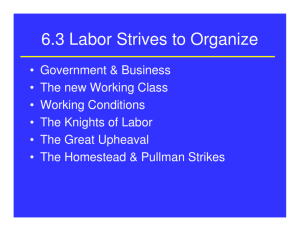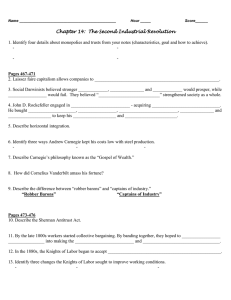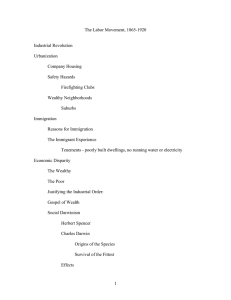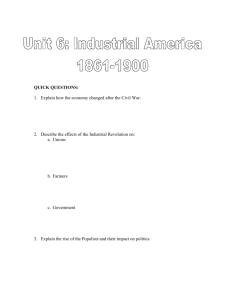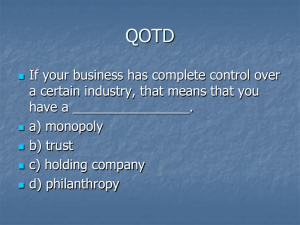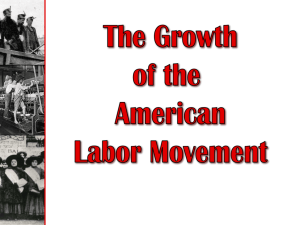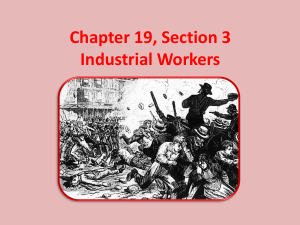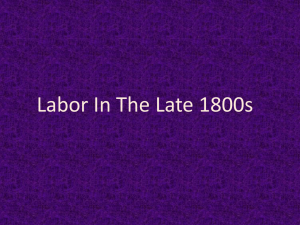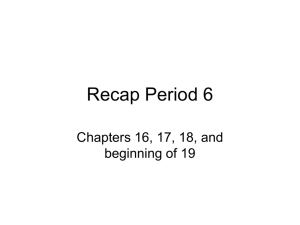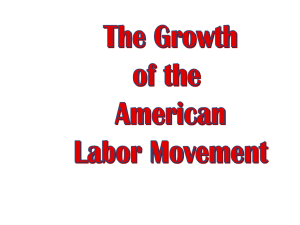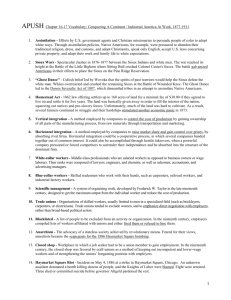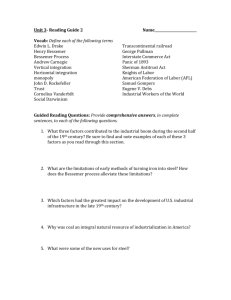The Second Industrial Revolution – Day 4
advertisement
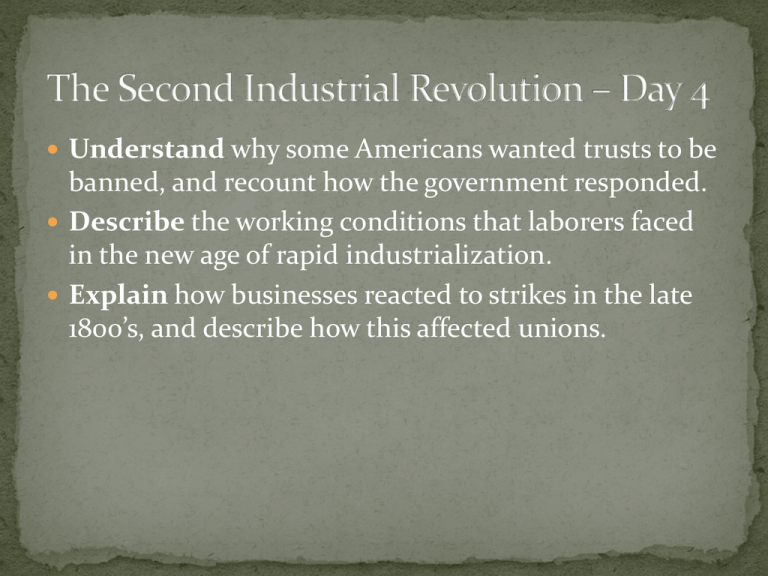
Understand why some Americans wanted trusts to be banned, and recount how the government responded. Describe the working conditions that laborers faced in the new age of rapid industrialization. Explain how businesses reacted to strikes in the late 1800’s, and describe how this affected unions. Bell Work 4 What’s the assault rifle invented by Mikhail Kalashnikov in 1947 best know as? Time Table AK47 Who were Robber Barons? Industrialists of the late 1800’s who amassed huge personal fortunes, typically as a direct result of pursuing various anti-competitive or unfair business practices. Do you think the Robber Barons of the Second Industrial Revolution abused Capitalism? Do similar kinds of business practices go on today? Explain. Analyze political cartoons on following slide! Bell Work – 10 min. Lecture Notes – 25 min. Class Work 2 – 10 min. High Cost of Low Prices – 10 min. Labor Striving to Organize Government and Business Many industrial capitalists opposed any government interference in business activities…unless it helped them. For example, in 1875, Congress raised tariff rates to make imported steel considerably more expensive than domestic steel. At the same time government did little to regulate business practices. The government’s policies concerning business practices most often benefited the industrialists, not the workers. The government did pass the Sherman Antitrust Act in 1890, which outlawed all monopolies and trusts that restrained trade. This act failed to define what constituted a monopoly or a trust, making it a difficult act to enforce. 1890 saw 10 percent of the population controlling close to 75 percent of the nations wealth. The New Working Class The demand for labor soared and was filled largely by: The flood of immigrants moving to the U.S. Rural Americans in search of work African Americans who moved to the cities following emancipation African American women did compete with poor immigrant women for domestic jobs and unskilled factory work Children By 1890 close to 20 percent of American children (ages 10-15) worked for wages, often in poor conditions like the mines and factories. Working Conditions Working Conditions Children often worked in textile mills, 12 hour shifts, often at night for pennies a day. Conditions were difficult for all unskilled workers. White male laborers worked at least ten hours a day, six days a week for less than $10 Minority men worked the same hours while paid less Women and children as well, while receiving sometimes half what the white men would get. Fatigue made an unsafe environment worse In 1881 alone, some 30,000 railroad workers died on the job Most employers felt no responsibility for work-related deaths, did little to improve conditions or pay workers injured on the job who could not function The Knights of Labor A successful labor union fought for temperance, the eight hour workday, equal pay for equal work and an end to child labor. By 1886, the Knights boasted a membership of over 700,000 One reason for success was an eventual welcoming of men, women, and African Americans, skilled or unskilled. However, they actively opposed Chinese workers The Great Upheaval 1886 saw about 1,500 strikes involving more than 400,000 workers, a year known as the Great Upheaval Homestead Strike 1892 saw a strike break out in response to a wage cut in Homestead Penn. Managers responded with a lockout and a hiring of 300 guards to protect the steel plant. A violent clash between guards and strikers resulted in 16 dead. Pullman Strike In May 1894, workers at the Pullman sleeping-car factory in Pullman, Il. went on strike. Pullman had cut wages but refused to lower rents and prices at the stores in his company town. In support, railroad workers brought all rail traffic to a halt throughout the Midwest. The government ordered an end to the strike, claiming it was a federal offense to prevent the delivery of U.S. mail. Union officials refused and were jailed. Class Work 2 Read the Haymarket section in your text on Pg. 485 and the same on Pg. 173 from you People’s History handout. Bullet point similarities and differences between the two readings. Speed Dial Cell Phone
